|
Visiting
Champagne Bollinger
Part 2, in the vineyards of A˙
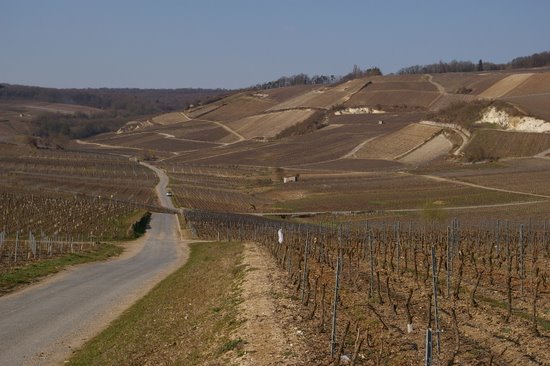
Close
to the Bollinger house, there is a small plot containing each of the
permitted Champagne varieties: Pinot Teinturier, Arbane, Pinot
Meunier, Gamay, Chardonnay, Pinot Blanc, Petit Meisler, Pinot Noir
(both 386 and 743 clones) and Pinot Gris. Most houses use just three
of these grapes: Pinot Noir, Pinot Meunier and Chardonnay.
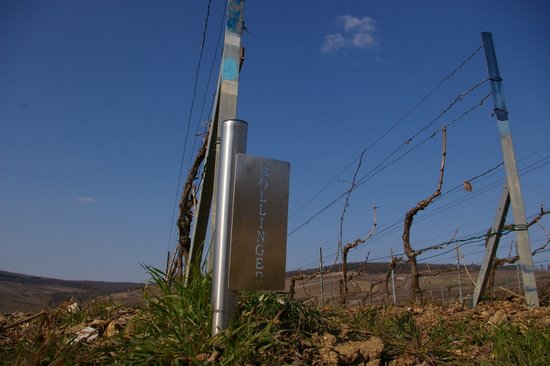
As
viticulturalist Gilles Descotes takes us through the vineyards, we
discuss the issue of sustainability. Champagne as a region has
struggled with its non-green image. Part of this stems from the
practice of using household waste from Paris as fertilizer. This
might have been a good idea in the 1920s, but by the 1960s the
nature of this waste had changed, and you can still find bits of
plastic and metal debris in the vineyards. This has all stopped, and
the CIVC has encouraged the growers in the region to employ more
sustainable growing practices, and moved growers away from nuking
their vineyards with herbicides.
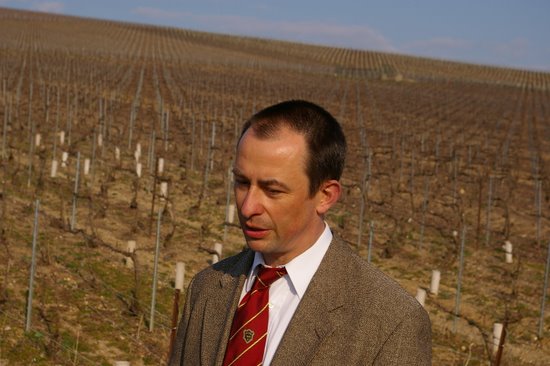
Gilles Descotes
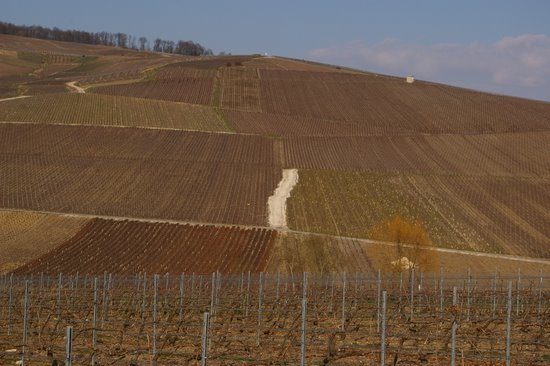
‘We
have reduced herbicide use 50% in the last three years, and our aim
is to use no herbicides at all,’ says Descotes. ‘The motivation
isn’t so we can boast around the world about what we are doing; we
are just trying to do our best.’ Yields in Bollinger-owned
vineyards are 10–20% lower than in the rest of Champagne, and in
the last four years no fertilizer has been used. ‘We want the best
grapes and the best expression of terroir.’ Bollinger recently did
lots of soil analysis and found out that their soils were very rich
to the point that no fertilization was deemed necessary for 5–10
years.
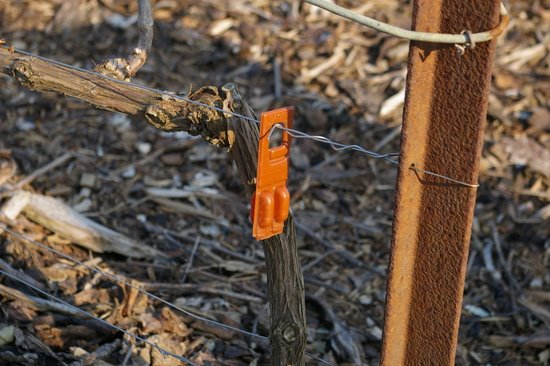
Sexual
confusion is used in 80% of the vineyards (see picture above).
This is a method that employs the pheromones of female moths to
confuse the male moths who, unable to find their mates, cannot
breed. These moths, Eudemis (Lobesia
botrana) and Cochylis (Eupoecilia
ambiguella) are big problems in vineyards. The only village that
Bollinger doesn’t use sexual confusion in is Chouilly, because
their plot here isn’t big enough for it to work properly and the
other Chouilly winegrowers aren’t interested in it. ‘Winegrowers
say it is too expensive,’ reports Descotes. ‘It costs
€250/hectare plus labour, whereas insecticides are cheap and just
one spray is needed, at a cost of €40–50/hectare.’
Yields
in Champagne are large. In 2008 the average yield was 13 000
kg/hectare for Bollinger, whereas for Champagne as a whole it was 14
500 kg/hectare. Growers get paid well for their grapes. The average
price for Grand Cru grapes in A˙ was €5.8/kg in 2008. A grower
can live quite well off just a hectare of vines in Champagne.
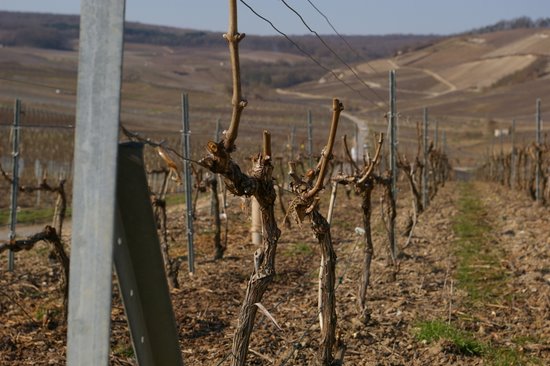
Bollinger
now have 163 hectares of vines, which is a lot for a Champagne
house, providing for 60% of its needs (the other Grande Marques
average about 11%). Descotes estimates that the price of a hectare
of Grand Cru vineyards in 2008 was about €1.2–1.3 million, but
no one knows exactly what the price would be now. His grandfather
was a small winegrower/winemaker and so Descotes owns 14 ares of his
own vineyards in Oger.
See
also:
 Part
1, introduction and the vieilles vignes Francaises Part
1, introduction and the vieilles vignes Francaises
 Part
2, in the vineyards Part
2, in the vineyards
 Part
3, in the cellars, tasting wines Part
3, in the cellars, tasting wines
 A
previous report on the wines of Bollinger A
previous report on the wines of Bollinger
Wines
tasted as indicated
Find these wines with wine-searcher.com
Back
to top
|

